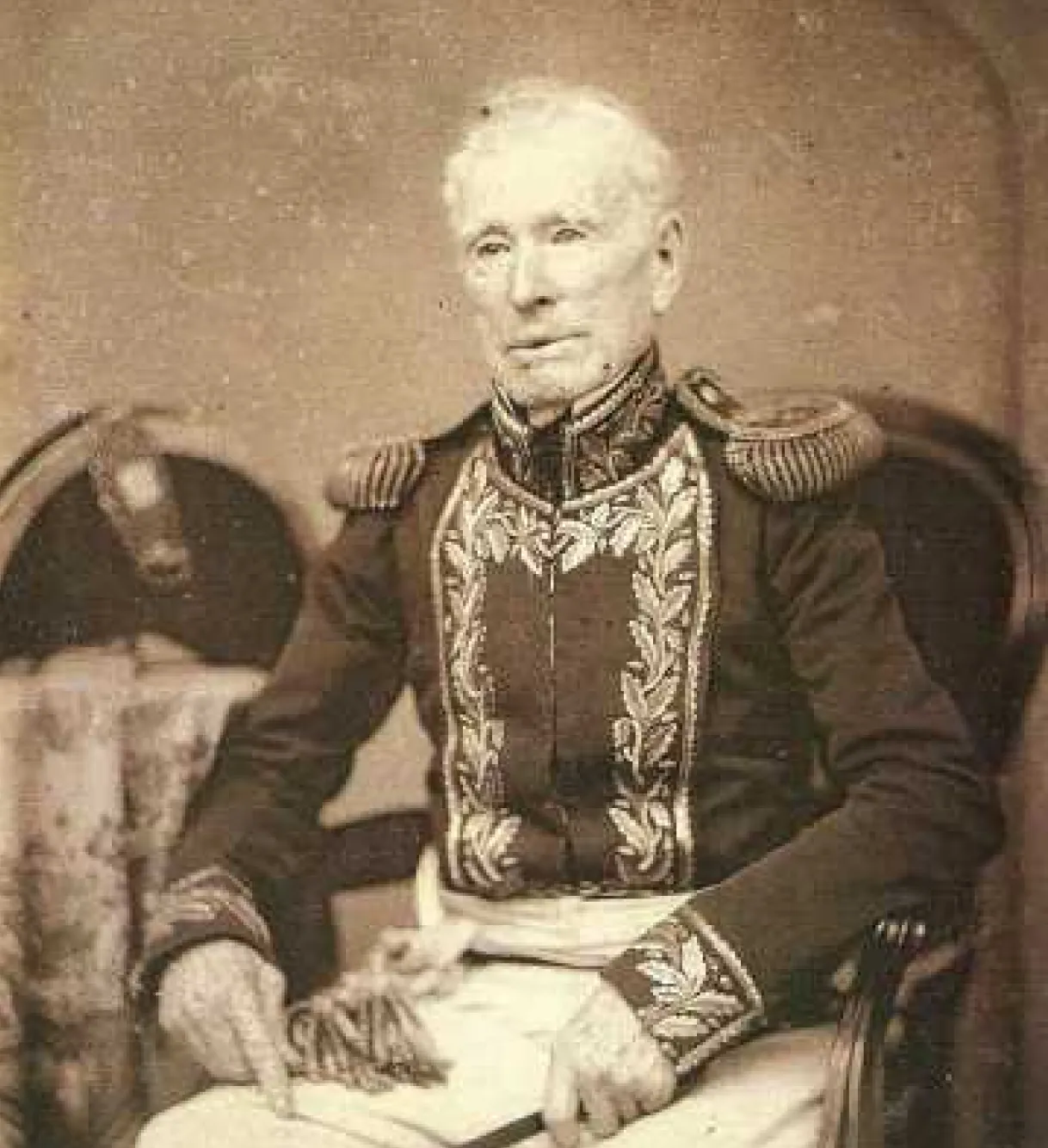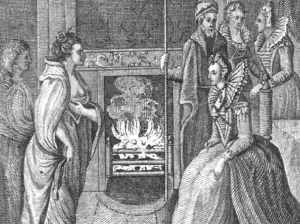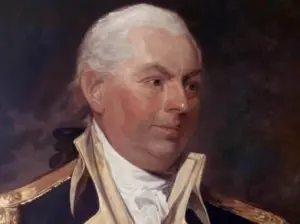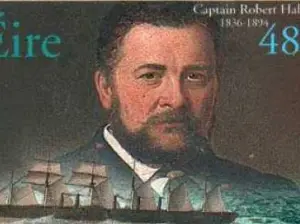Admiral William Brown
William Brown was one of the most important Irish military commanders in the Argentine War of Independence from Spain and the war against Brazil and he was the founder of the Argentine navy. Born in Foxford, Co. Mayo on June 22, 1777, he accompanied his father to settle in Pennsylvania in 1786 (some historians argue Brown was an illegitimate son of William Gannon and Mrs Brown from Sligo). Brown’s naval career began as a cabin boy in merchant ships but he was pressed into service by the British navy in 1796.
During the Napoleonic Wars, he was imprisoned by the French and sent to Lorient. On being transferred to Metz he succeeded in escaping, disguised in a French officer’s uniform. Brown was recaptured and imprisoned in the fortress of Verdun. In 1809, he escaped again in the company of a British colonel named Clutchwell and eventually reached Germany, from where he travelled to England, marrying later in the year Eliza Chitty in Kent.
Later in 1809, William Brown was engaged in commercial business with the River Plate, chiefly trading arms and munitions on both sides of the river. Brown got involved in the War of Independence when he arrived in the Buenos Aires port during the revolution of 1810 to find it blockaded by Spanish ships.
When his ship was commandeered by the Spanish, Brown organized an expedition that captured one of the blockading ships and brought it in triumph into port. Brown returned to England and brought his wife and two children back to Buenos Aires definitively in 1812. Brown was offered the command of a small fleet by the Argentine authorities, he defeated the Spanish in Martín García and broke their blockade of Montevideo in March 1814, allowing the patriot army to capture it and thus ending the Spanish threat to the newly independent state.
Brown and his fleet were sent in 1815 by the government of Buenos Aires to the Pacific. In 1816, for three weeks his forces stormed the Peruvian port of Callao, a Spanish stronghold in South America. Brown then went on to capture the fort of Punta de Las Piedras at the mouth of Guayaquil Bay in southern Ecuador.

Born June 22, 1777, Foxford, Co Mayo
Died March 3, 1857, Buenos Aires, Argentina
Unfortunately trying to find his way back to Buenos Aires, Brown was captured by the Spanish in Ecuador and then his ship and cargo were seized by the British in Barbados resulting in having to fight his case in a British court to have his property returned. Once he returned to Buenos Aires, he faced a government investigation into his exploits and was retired from active service in 1819. However, Brown was recalled to service upon the outbreak of war with Brazil in 1825 – 1828, during which he achieved a number of major victories in Montevideo, Pozos, Juncal, Quilmes and again in Martín García.
In 1828, Brown was appointed governor of Buenos Aires. Later in 1841, he led the successful campaign against Gíuseppe Garibaldi and Admiral John H. Coe. In 1847, Brown visited his native Foxford accompanied by his daughter. On his death on March 4, 1857, in Buenos Aires, William Brown was given a public funeral and buried with full honours in Recoleta cemetery.
Since the mid-1980s, a replica of Brown’s sword has been worn by Admirals of the Argentine Navy. There is a replica on display here in our Museum. Why not come and see for yourself. The original is in the National Historical Museum of Argentina.
Irish



